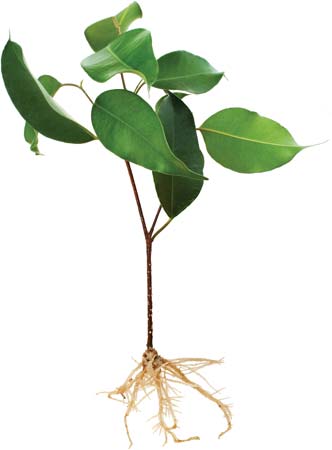What to pay attention to
If you want to make a plant specimen that will be a valuable academic resource, there are a few things you need to be aware of.
 Before collecting any plant, first observe it carefully. Plants consist of roots, caulomes (the stem structure of a plant considered as a whole), leaves, flowers, seeds (spores for ferns), etc. Collecting as many parts as possible enables you to preserve these plant characteristics. In particular, because organs such as flowers, fruits and spores that are related to reproduction, usually have specific characteristics for that particular plant; it is more useful to make a specimen that includes those organs.
Before collecting any plant, first observe it carefully. Plants consist of roots, caulomes (the stem structure of a plant considered as a whole), leaves, flowers, seeds (spores for ferns), etc. Collecting as many parts as possible enables you to preserve these plant characteristics. In particular, because organs such as flowers, fruits and spores that are related to reproduction, usually have specific characteristics for that particular plant; it is more useful to make a specimen that includes those organs.
- The specimen should be placed in a quarter-sheet of newspaper 12in x 16in (30cm x 40cm). Bend long branches or cut them into multiple pieces so they will fit on the sheet. If there are many leaves or branches overlapping, the plant specimen may not effectively portray the characteristics of the plant. In that case, make multiple specimens from the plant and assign the same sample number to the plant specimens, making sure that they are made from the same plant.
- If you collect multiple plants of one species, you will need to make a separate plant specimen with a different sample number.
- If the plant is small, you can collect multiple plants that can be placed on one sheet.
- If a leaf or flower detaches from the branch, place it in an envelope (or packet: make one from a paper sheet) and keep the envelope or paper bag with the main plant specimen for drying.
- For fruits or seeds, put one or more, if needed, in an envelope or packet and dry without pressing to preserve the 3-dimensionality without changing the shape.
Some experience may be necessary to make a proper plant specimen. You may want to consult with an expert





